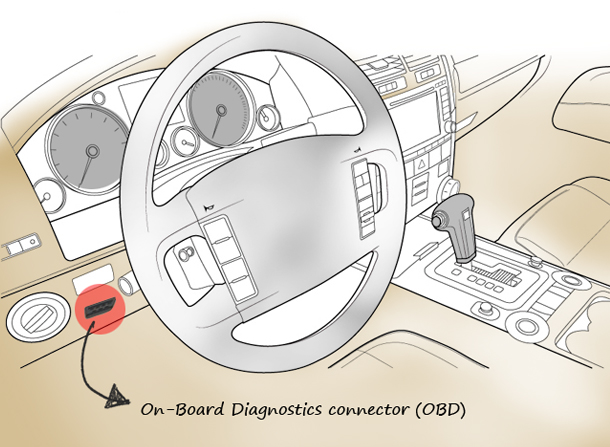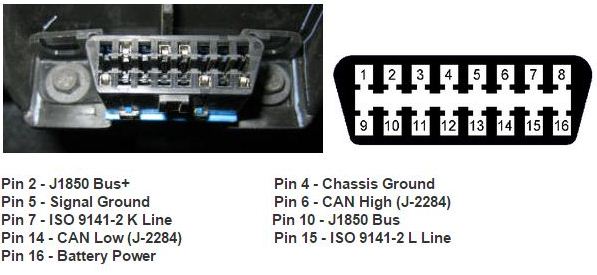OBD Tracker

There are over 900 million OBD II equipped vehicles in the world today. And the number continues to grow and would reach 2 billion soon. The most useful part of OBD GPS tracker or plug and play vehicle tracker is the ability to read information from the vehicle.
Using an OBD GPS tracker, you can read Engine fault codes, and even monitor real-time statistics such as Engine RPM, vehicle speed, Vehicle Identification Number (VIN), etc.
There are a variety of different devices on the market ranging from code scanners to OBDII GPS tracking devices that calculate fuel consumption as you drive.
Is OBD available in my Car?
If you purchased a car after 1996, chances are it has an OBD-II (On-board diagnostics II) port. The OBD connector typically is located within three feet of the driver, under the dash or the area beneath the steering and does not require any tools to be revealed.
My friend’s car is of different make/model, does it matter?
The Society of Automotive Engineers (SAE) has, along with the International Standards Organization (ISO), developed a set of standards (SAE J1962, SAE J1979, etc.) that OEMs use to implement the regulations within a vehicle.
While the parameters, or readings, required by OBD II regulations are uniform, the automobile manufacturers had some latitude in the communications protocol they used to transmit those readings to scanners.
Naturally, each felt they had the one true way, so there are 5 signaling protocols that are permitted with the OBD-II interface. “Most vehicles implement only one of the protocols, and it is possible to deduce the protocol based on which pins are present on the J1962 connector.”
The following are the five different signaling protocols.
1. SAE J1850 -PWM (Ford Motor Company)
2. SAE J1850 -VPW (General Motors)
3. ISO 9141-2 (Chrysler, European, and Asian vehicles)
4. ISO 14230 KWP2000 (Keyword Protocol 2000)
5. ISO 15765 CAN protocol developed by Bosch
All OBD-II pinouts use the same connector, but different pins are used with the exception of pin 4 (battery ground) and pin 16 (battery positive).

What are Engine fault codes and how can I decipher?
Each fault code (known as Diagnostics Trouble Code – DTC) indicates the type of fault, the area of the OBD and powertrain/emission control system where the fault is located.
“When a problem occurs that may cause the vehicle emissions to exceed applicable standards, the OBD system identifies the failure with a specific DTC, illuminates the malfunction indication light (MIL) and records a record of what has occurred”.
OBD-II codes consist of a number of parts. Here is a sample OBD2 code: P0037. These variable digits relate to a specific problem. P0037 is something to do with oxygen sensor heater element.
Which OBD GPS tracker I should buy to hook up to OBDII port?
To retrieve values from OBD-II port, you will need a piece of diagnostic equipment that you probably don’t have an OBD II scan tool.
For those of you who use the platform can hook up an OBDII GPS/GPRS tracking device – OBD tracker to the port and get the real-time data relayed over GPRS. This Plug & play vehicle tracker can be directly plugged into an OBD II port found inside your vehicle near the driver’s legs. There are NO external antennas to hide; NO power cable assembly to attach and NO installation cost.
The standards developed for implementation of OBD tracking devices attached to the OBD Port are:
-
SAE J1978/ISO 15031-4 – describes the capabilities that must be supported by test equipment.
-
SAE J3005 – defines further guidance for devices attached to the OBD Port.
-
SAE J1699-4 – describes known vehicle and tool anomalies that may cause issues during OBD communication.
And finally, what OBD is not?
Bob Gruszczynski, in his article published in GPS Business News, debunks many myths associated with OBD. “OBD is a request-response protocol. To retrieve a piece of OBD data, it must be requested correctly via a properly formatted communication protocol message. OBD data is not directly available via the OBD port otherwise unless an OEM allows it”.
As per Bob, OBD doesn’t mean all the diagnostic information. “OBD is not a complete vehicle diagnostics system. OBD does not concern itself with door modules or window controllers, etc. There are no current requirements to provide any data related to non-OBD systems through the OBD port”.
Please read the full article here.